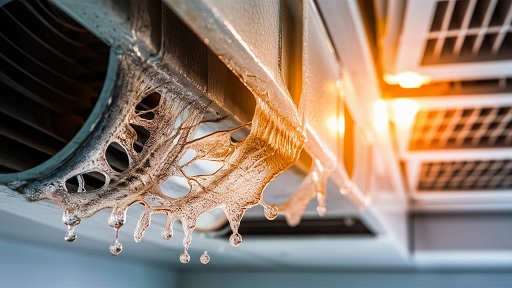Ensuring your air conditioning system is in top working condition as the summer heat rises is crucial. While most people focus on changing filters and scheduling maintenance checks, one aspect of AC care often goes overlooked – condensation in ducts. This issue can not only affect the performance of your AC but also impact indoor air quality.
For more information on the causes of condensation in AC ducts and how to fix it, visit Anderson Air and ensure the best indoor air quality for your home or business.
In this article, we’ll explore the causes and effects of condensation in AC ducts and offer solutions for addressing the issue.
What causes condensation in AC ducts?
Condensation happens when warm, humid air encounters cooler surfaces like metal ductwork. It occurs most frequently during summer months when the outside temperature is high, and air conditioning units are working hard to cool indoor spaces. The condensation begins when the cool AC air travels through ducts running through hot and humid attics or crawl spaces.
If the insulation in these areas is inadequate or damaged, it can lead to temperature differences between the outside and inside of the ductwork. This temperature difference causes moisture from the warm air to collect on the cooler surface of the ducts, leading to condensation.
Effects on indoor air quality
The buildup of moisture caused by condensation can significantly impact indoor air quality. Water collecting in the ducts creates an ideal environment for mold and bacteria growth. These microorganisms can then spread through the ducts and into the air circulating throughout the building.
Breathing in mold and bacteria can cause several health issues, such as allergies, asthma and respiratory problems. It may also produce unpleasant odors and decrease the comfort of indoor spaces. This is particularly troubling for people with weakened immune systems or existing respiratory conditions.
Condensation in AC ducts can cause health concerns and damage buildings’ structures. The constant presence of moisture can weaken materials such as drywall and wood, leading to rot and structural damage over time. This not only poses a safety risk but also requires costly repairs.
How to fix condensation in AC ducts
To ensure the best indoor air quality and prevent potential health issues and structural damage, it’s crucial to promptly address condensation in AC ducts. Here are some solutions for fixing this problem:
- Insulation: Proper insulation is critical in preventing temperature differences that cause condensation in AC ducts. Insulating attics and crawl spaces can help regulate temperatures and reduce moisture buildup.
- Duct cleaning: Regular ductwork cleaning can remove mold or bacteria growth caused by condensation. This also improves airflow, reduces energy costs, and improves overall system performance.
- Dehumidifiers: Installing dehumidifiers near your HVAC system or in areas with high humidity levels can help regulate moisture and prevent condensation in ducts.
- Professionals: It’s essential to seek the expertise of HVAC professionals to inspect and address issues with condensation effectively.
Conclusion
In conclusion, condensation in AC ducts is a critical issue that can significantly impact indoor air quality and the structural integrity of buildings. As moisture accumulates in the ductwork, it creates a conducive environment for mold and bacteria, leading to potential health risks and unpleasant odors. Additionally, prolonged moisture exposure can cause damage to building materials, resulting in costly repairs.
To mitigate these problems, it’s essential to address condensation promptly. This can be achieved by ensuring proper insulation, regularly cleaning ducts, and using dehumidifiers to regulate humidity levels. Moreover, seeking professional assistance from HVAC experts like AC Repair Ottawa can provide comprehensive solutions to maintain a healthy and comfortable indoor environment.
By taking these steps, you can safeguard your home or business from the adverse effects of condensation in AC ducts.



